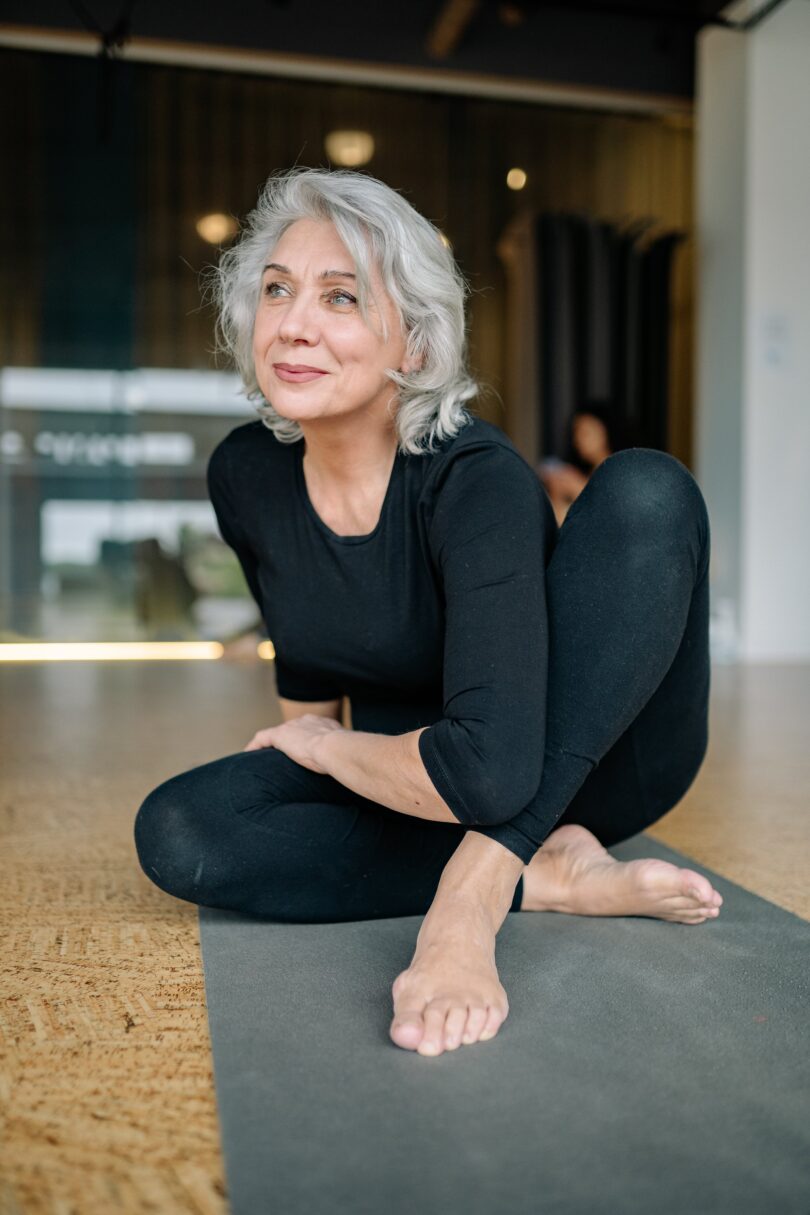Table of Contents
Yoga, with its roots in ancient practices, has evolved into a versatile and inclusive activity suitable for people of all ages. In recent years, it has gained popularity among seniors seeking a gentle yet effective way to maintain physical and mental well-being. In this article, we’ll explore the world of basic yoga for seniors, uncovering its benefits, practical tips, and simple poses tailored to their needs.
Why Yoga for Seniors?
As the body ages, maintaining flexibility, balance, and mental clarity becomes increasingly important. Traditional forms of exercise might pose challenges for seniors due to joint issues or reduced stamina. This is where yoga shines, offering a low-impact alternative that promotes holistic health.
Health Benefits of Yoga
3.1 Increased Flexibility
One of the primary advantages of practicing yoga is the noticeable improvement in flexibility. Seniors often experience stiffness in joints, and gentle yoga poses can help alleviate this by gradually increasing range of motion.
3.2 Improved Balance
Yoga emphasizes balance, a crucial aspect for seniors to prevent falls and injuries. The practice of specific poses enhances stability, contributing to better overall equilibrium.
3.3 Stress Reduction
Incorporating mindful breathing and meditation, yoga provides seniors with tools to manage stress effectively. As life brings its challenges, the calming aspects of yoga become invaluable.
Getting Started with Basic Yoga
4.1 Choosing the Right Yoga Style
Seniors may benefit from styles like Hatha or Iyengar yoga, known for their slower pace and focus on alignment. It’s essential to find a style that suits individual preferences and health conditions.
4.2 Essential Equipment
To start a basic yoga practice, minimal equipment is required. A comfortable mat, supportive clothing, and a sturdy chair are often sufficient. The simplicity of the setup encourages seniors to embark on their yoga journey with ease.
Simple Yoga Poses for Seniors
5.1 Mountain Pose (Tadasana)
This foundational pose improves posture and strengthens the lower body. Seniors can perform it with the support of a chair, gradually progressing to a freestanding position.
5.2 Chair Pose (Utkatasana)
An excellent pose for strengthening the thighs and lower back, the chair pose is accessible and beneficial for seniors. It combines elements of balance and strength.
5.3 Tree Pose (Vrikshasana)
Focusing on balance and concentration, the tree pose is adaptable for seniors. It enhances stability while encouraging a sense of groundedness.
Related Article : Beginners Yoga for Over 60s
Breathing Techniques
6.1 Diaphragmatic Breathing
Deep, diaphragmatic breathing is a fundamental aspect of yoga. Seniors can practice this technique to enhance lung capacity and promote relaxation.
6.2 Ujjayi Breathing
Known as “victorious breath,” Ujjayi breathing involves controlled inhalation and exhalation through the nose. This technique aids in maintaining focus and calming the mind.
Safety Tips for Senior Yogis
7.1 Consultation with a Healthcare Professional
Before starting any new exercise routine, seniors should consult with their healthcare provider to ensure that yoga is safe and suitable for their individual health conditions.
7.2 Listening to Your Body
Yoga is a personal journey, and it’s essential for seniors to listen to their bodies. If a pose feels uncomfortable or painful, modifications can be made to accommodate individual needs.
Overcoming Challenges
8.1 Adapting Poses for Mobility Issues
Seniors with limited mobility can still enjoy the benefits of yoga by adapting poses. The use of props or practicing seated poses allows for a customized experience.
8.2 Dealing with Joint Pain
Yoga can be tailored to address joint pain. Gentle movements and modifications ensure that seniors can engage in a practice that enhances flexibility without exacerbating discomfort.
Incorporating Yoga into Daily Routine
9.1 Morning Routines
Starting the day with a few minutes of yoga sets a positive tone. Simple stretches and breathing exercises can invigorate the body and mind.
9.2 Evening Relaxation
In the evening, seniors can engage in restorative poses to unwind and promote relaxation. Yoga becomes a tool for improving sleep quality.
Testimonials from Seniors
[Include real or fictional testimonials showcasing positive experiences with basic yoga for seniors.]
Frequently Asked Questions (FAQs)
11.1 Can seniors with limited mobility practice yoga?
Yes, yoga can be adapted to accommodate seniors with limited mobility. Gentle poses and the use of props make the practice accessible.
11.2 Is it necessary to have previous yoga experience?
No previous experience is necessary. Basic yoga for seniors is designed for all levels, including beginners.
11.3 How often should seniors practice yoga?
Seniors can start with a few sessions per week and gradually increase based on comfort. Consistency is key for reaping the benefits.
11.4 Can yoga help with arthritis?
Yoga’s gentle movements can provide relief for arthritis sufferers. However, consultation with a healthcare professional is crucial for personalized advice.
11.5 Are there specific poses for seniors with back problems?
Yes, there are modified poses to address back issues. Seniors should consult with a yoga instructor to tailor the practice to their needs.
Conclusion
Embracing basic yoga can be a transformative journey for seniors, offering a holistic approach to well-being. With its myriad benefits, from increased flexibility to stress reduction, yoga becomes a gentle companion in the golden years. As seniors discover the joy of movement and mindfulness, they embark on a path to enhanced physical and mental wellness.
Related Article : Benefits Of Yoga For Students: Improve Your Health and Well-Being







